 "Minor Happenings" covers the important developments and news in the Indians farm system. While most of the information in this report is from my own research and through interviews I have conducted with organizational personnel, some information in this report is collected and summarized from the various news outlets that cover each team.
"Minor Happenings" covers the important developments and news in the Indians farm system. While most of the information in this report is from my own research and through interviews I have conducted with organizational personnel, some information in this report is collected and summarized from the various news outlets that cover each team.
With Akron now finished with the playoffs, the Indians 2008 minor league season has come to a close. And with that another year of Minor Happenings is quickly coming to a close as well. We are still open for business though for a little while longer as a few player features on Frank Herrmann, Neil Wagner, Brian Juhl, Josh Judy and Jonathan Holt will all post in the next week and a half. Also, a special edition of Happenings will post next week recapping a visit to Mahoning Valley two weeks ago to talk to some coaches and players like Tim Fedroff, Trey Haley, Cord Phelps, and Heath Taylor. We'll close things out with the year end awards at the end of the month.
Don't forget to check out player features on Kevin Dixon and Chris Jones which posted earlier in the week.
Even though the coverage for this season is wrapping up, I'll have updates on the Fall Instructional League, winter and fall leagues, and any other news all offseason. And, we will continue to air our weekly radio show "Smoke Signals" every Thursday from 9:30-10:30pm this offseason and talk about all things Cleveland Indians baseball related. And don't forget the 2009 Indians Top Prospect book will be coming at the end of the year, a project I will dive right into at the end of this month!
Triple-A Affiliate Move To Columbus Finally Official
Well, that didn't take long. Major league teams yesterday were finally allowed to talk to other minor league affiliates about moving minor league operations to their site. Literally at 12:01 a.m. yesterday the Columbus Clippers General Manager Ken Schnacke left 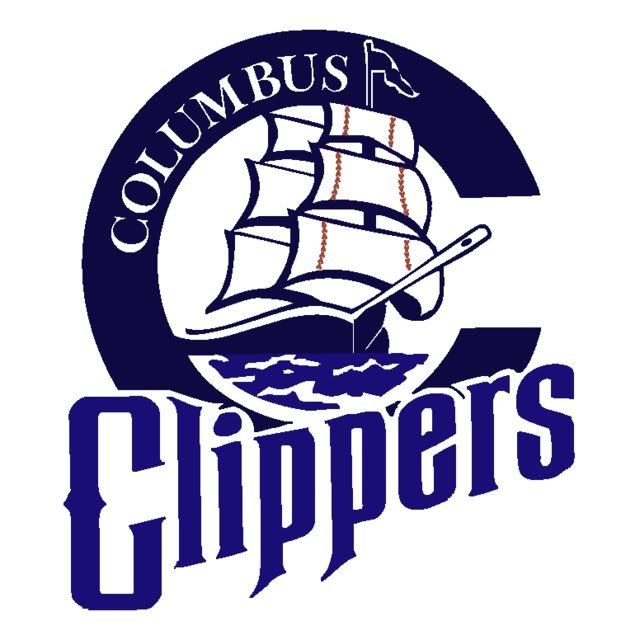 Indians General Manager Mark Shapiro a phone message that the Clippers were very interested in partnering up with the Indians and that they would like to set up a meeting to discuss it. Schnacke drove up to Progressive Field and talked with the Indians, and within about twelve hours after that phone call a marriage between Cleveland and Columbus was consummated.
Indians General Manager Mark Shapiro a phone message that the Clippers were very interested in partnering up with the Indians and that they would like to set up a meeting to discuss it. Schnacke drove up to Progressive Field and talked with the Indians, and within about twelve hours after that phone call a marriage between Cleveland and Columbus was consummated.
Major league teams are only permitted to sign two or four year player development contract deals with a minor league host city. The Indians opted for the maximum four year deal which will make Columbus the Indians Triple-A home through 2012, but don't kid yourselves, this is a marriage that is likely to last forever given the unique situation with the proximity of both cities to one another and being in the same state, the strong Indians fanbase existing in Columbus and now expected to grow, and the new state-of-the-art ballpark Huntington Park located in the trendy downtown Arena District that will open this spring.
"Partnering with the Columbus Clipper organization is a tremendous opportunity for the Indians organization to affiliate with a first-class organization in the vibrant capital city located in the heart of our fan base," said Cleveland Indians President Paul Dolan in a statement released by the team. "It's an exciting time for both organizations, as well as for the baseball fans of Ohio."
Columbus officials are boiling over with excitement now that the Indians are on board. At 1:00 p.m. today Indians President Paul Dolan and Vice President, Baseball Operations Chris Antonetti the Indians held a press conference at Huntington Park to formerly introduce the new partnership. The move to Columbus was a unique situation, and the option to move to their home state's capital was really the only reason the Indians left Buffalo. The New York Mets are expected to add Buffalo as their Triple-A affiliate in the coming days, possibly as soon as Monday.
"We would like to thank Bob and Mindy Rich, the entire Buffalo Bisons organization and the Bisons fans for their support the past 14 years," said Dolan. "Our affiliation coincided with the organization's renewed commitment to the foundation of the franchise - its Player Development System - and the Bisons organization played a major role in our success during that time. Today's announcement is a result of a unique opportunity presented the Indians organization. We wish the Rich family and the Bisons organization much success in the future."
The agreement marks the first time the Indians and Columbus Clippers have been affiliated in the 32-year history of the Clippers organization. Columbus had been affiliated with the Washington Nationals the last two seasons (2007-08) after a 28-year relationship with the New York Yankees from 1979-2006. With the addition of the Triple-A Columbus Clippers, the Indians now possess four of their top five minor league affiliates within the State of Ohio (AA Akron, A Lake County, Short-Season A Mahoning Valley). All four of those affiliates are located within a two and a half hour drive from Progressive Field.
Director's Cuts
Indians Farm Director Ross Atkins had some things to share about two heralded prospects left-hander Scott Lewis and outfielder 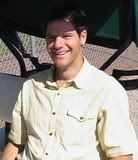 Matt LaPorta:
Matt LaPorta:
On Scott Lewis: "You know what has really been interesting and impressive to watch about him over the last month and a half is he has known he is in the mix, he has known he is being considered [to fill a spot in the big league rotation]. He has watched the other guys come up and then seen a couple of injuries here and there, and all along has been saying 'I am ready' down here. When guys know that they are in the mix, and they answer the call a la Aaron Laffey and Jeremy Sowers in the past, it really is impressive and shows that they can handle the pressure. Scott is an extremely consistent human being, he goes about his business the same way every day, and it has paid off for him."
On Matt LaPorta: "He has pretty much been the best player on the field [in the playoffs], whether we are playing Bowie or Trenton. He has been the best at the plate and the most impressive all around player. He has really been great in left field. It is obvious that he is feared as a hitter, and he still finds a way to get his pitch to hit and drive it out of the park. [In Game 1 against Trenton] the results did not show it, but he had great at bats and was close to putting the team in a better position to win."
Instructional League Opens
The Indians kicked off the Fall Instructional League (FIL) on Wednesday in their new state-of-the-art spring training complex in  Goodyear, Arizona. The player development part of the complex is complete and will be utilized for the next month in the FIL until it concludes on October 17th. The start of the FIL marks the organization's first official activities in the Goodyear complex as they get set for their first spring training there this coming February after 16 years in Winter Haven, Florida.
Goodyear, Arizona. The player development part of the complex is complete and will be utilized for the next month in the FIL until it concludes on October 17th. The start of the FIL marks the organization's first official activities in the Goodyear complex as they get set for their first spring training there this coming February after 16 years in Winter Haven, Florida.
A total of 58 players makeup the FIL roster, with most of the players being recent 2007 and 2008 draft picks or undrafted free agent signings both domestically and internationally. Many of the veterans on the roster are in the FIL to make up innings or at bats they may have missed this season due to injury, while a lot of the younger players are given the opportunity to play more games and get a lot of firsthand instruction from the Indians entire player development staff that is on hand.
Right-hander Adam Miller is one of the top players at the new Goodyear facility looking to make up some innings after he missed over half the season due to surgery on his right middle finger. Right now he is still throwing bullpen sessions every few days and then mixing in simulated games to ramp himself up for game action in the FIL and the Dominican Republic which he will report to in mid-October. Miller is expected to throw around 40 innings this offseason and is on pace for a full recovery from his injury.
I also got word that left-hander Ryan Morris was a last minute edition and he is on his way to Arizona, so he is not listed below. He will not pitch, but will take part in the Strength and Conditioning portion of the FIL. For more on the Fall Instructional League and what it is all about, check out this article posted yesterday on my blog.
Here is a roster of players and the FIL schedule:
PITCHERS (26) HT WT B/T AGE
Araujo, Elvis 6.04 165 R/R 17
Archer, Christopher 6.02 165 R/R 19
Berger, Eric 6.03 210 L/L 22
Bryson, Rob 6.01 205 R/R 20
Campos, Jose 6.03 175 R/R 18
Cook, Clayton 6.03 175 R/R 18
De La cruz, Kelvin 6.05 187 L/L 20
Flores, Fernando 6.04 220 R/R 17
Frias, Santos 6.03 189 R/R 20
Gomez, Jeanmar 6.03 168 R/R 20
Haley, Curtis 6.03 180 R/R 18
House, Glenn 6.02 215 R/L 18
Jones, Christopher 6.02 165 L/L 19
Lewis, Scott 6.00 185 S/L 24
McFarland, Timothy 6.03 190 L/L 19
Mahalic, Joseph 6.05 205 R/R 19
Miller, Adam 6.04 175 R/R 21
Moncrief, Carlos 6.01 210 L/R 19
Perez, Alexander 6.02 156 R/R 19
Pontius, Michael 6.02 235 R/R 20
Putnam, Zachary 6.02 215 R/R 21
Roberts, David 6.03 210 L/R 21
Rondon, Hector 6.03 165 R/R 20
Sipp, Tony 6.00 185 L/L 25
Taylor, Brandon 5.11 220 L/L 22
Valera, Francisco 6.01 170 R/R 18
CATCHERS (10) HT WT B/T AGE
Abraham, Adam 6.00 210 R/R 21
Castillo, Silvio 6.00 168 R/R 22
Chen, Chun 6.01 200 R/R 19
Davis, Adam 5.09 185 S/R 23
McBride, Matthew 6.02 215 R/R 23
Montero, Moises 6.00 210 R/R 18
Perez, Roberto 6.00 200 R/R 19
Petit, Rolando 6.02 205 S/R 18
Santana, Carlos 5.11 199 S/R 22
Valadez, Michael 6.01 220 R/R 22
INFIELDERS (14) HT WT B/T AGE
Abreu, Abner 6.03 170 R/R 18
Chisenhall, Lonnie 6.01 200 L/R 19
Diaz, Kelvin 6.00 187 R/R 21
Fontanez, Kevin 5.11 170 R/R 18
Goedert, Jared 6.01 180 R/R 23
Mills, Beau 6.03 220 L/R 22
Nash, Christopher 6.04 230 R/R 21
Phelps, Robert 6.02 200 S/R 21
Recknagel, Nathan 6.02 220 R/R 22
Rivas, Ronald 6.02 184 R/R 20
Romero, Niuman 6.00 160 S/R 23
Sanchez, Karexon 5.11 175 S/R 21
Thompson, Mark 5.09 165 R/R 23
Tice, Jeremie 6.00 185 R/R 21
OUTFIELDERS (8) HT WT B/T AGE
Baker, Trent 6.00 175 R/L 18
Drennen, John 5.11 185 L/L 22
Fedroff, Timothy 5.11 190 L/R 21
Montero, Lucas 5.11 180 S/R 23
Palincsar, Timothy 6.03 190 L/R 21
Rucker, Kevin 6.01 185 R/R 18
Weglarz, Nicholas 6.03 215 L/L 20
White, Adam 5.10 190 S/R 23
SCHEDULE
Monday 22-Sep @ SD 12:30 PM
Tuesday 23-Sep
Wednesday 24-Sep KC 12:30 PM
Thursday 25-Sep
Friday 26-Sep @ TEX 12:30 PM
Saturday 27-Sep
Sunday 28-Sep
Monday 29-Sep @ KC 12:30 PM
Tuesday 30-Sep
Wednesday 1-Oct TEX 12:30 PM
Thursday 2-Oct
Friday 3-Oct LAD 12:30 PM
Saturday 4-Oct Intrasquad 10:00 AM
Sunday 5-Oct
Monday 6-Oct @ SEA 12:30 PM
Tuesday 7-Oct
Wednesday 8-Oct KC 12:30 PM
Thursday 9-Oct
Friday 10-Oct SD 12:30 PM
Saturday 11-Oct @ SD 10:00 AM
Sunday 12-Oct
Monday 13-Oct
Tuesday 14-Oct KC 12:30 PM
Wednesday 15-Oct @ KC 12:30 PM
Thursday 16-Oct LAD 12:30 PM
Friday 17-Oct
Mirabelli Talks Prospects
Indians Scouting Director John Mirabelli comments on an assortment of topics from the Arizona Fall League, to Tony Sipp, to David Huff, and so on:
On the Arizona Fall League: "It is a very competitive league where most of the elite prospects go, and one of the best-of-the-best 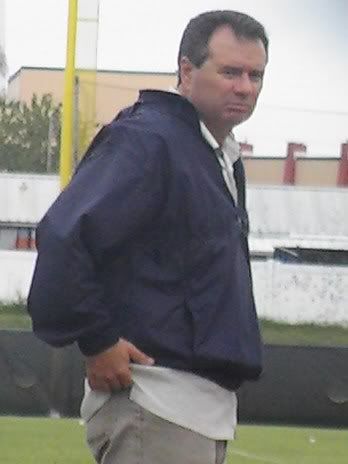 for minor league non-40 man prospects. It is a great developmental league for all of our guys. I am excited about Wes Hodges and Beau Mills, Sipp and some other pitchers that are going. It is a great experience. You are facing the best guys around all of minor league baseball and a very competitive schedule. You play six days a week, most of the games are during the day when it is hot and humid, and there is some fatigue and tired issues they have to fight through. For everybody we have sent out there over the years it has really been a plus for them developmentally."
for minor league non-40 man prospects. It is a great developmental league for all of our guys. I am excited about Wes Hodges and Beau Mills, Sipp and some other pitchers that are going. It is a great experience. You are facing the best guys around all of minor league baseball and a very competitive schedule. You play six days a week, most of the games are during the day when it is hot and humid, and there is some fatigue and tired issues they have to fight through. For everybody we have sent out there over the years it has really been a plus for them developmentally."
On Tony Sipp: "I think [he could be a player in the major league bullpen next year]. His stuff has come back as he is at 91-93 MPH. The slider and changeup are in place. I think - as it is with a lot of these Tommy John guys - the control and command are still not there yet, but that is what the Arizona Fall League is for. I think he is just a click away to being back to where he was before the injury. I think he is a guy that could impact our major league bullpen at some time next year. Luck sometimes plays a factor in scouting. I think he only pitched six innings his junior year at Clemson, and we happened to be at four of those six innings. We still weren't quite sure what we had. We knew we had an athlete with a good arm, a guy who was a little raw on the mound. So we actually followed him that summer up in the Cape Cod League for a month or so where he got a chance to pitch regularly. And we saw what he could do up there and it was pretty impressive and that made the decision pretty easy to offer him a contract."
On Carlos Santana: "I think we probably have a little more than we thought we got. We got a switch hitter at a premium position. He is a very athletic kid who is a converted outfielder/third baseman, so his athleticism is a big plus for him behind the plate. But he has offense, and offensive upside who is a very aggressive attack the ball kind of hitter that can do some damage. Plus you have the defensive skill set to stay behind the plate, so all in all you have a pretty impressive package there at a premium position."
On David Huff: "I think the only thing we were surprised by is the injuries he had last year. He had a little forearm problem that set him back in terms of innings, but once he cleared that up he has really been dominating. He has pitched better in Buffalo than he has in Akron. It is about his stuff, delivery and his command, and he is very close to being a major league ready pitcher. I think he will be in the mix next year, whether it is in the beginning of the year or sometimes during the year, he gives us viable major league starting depth right now. A very impressive year for David."
On the Mahoning Valley hitters: "We are excited about the starts some of these guys got off to. They hit the ground running, and that is a tough transition with wood bats, playing every night, and facing the best pitching you have ever faced before. But these guys all held their own and then some. Chisenhall, Phelps, Fedroff and you can even throw Tice in there. I think we have the makings of some good offensive players there."
On Lonnie Chisenhall move to 3B: "I think we are going to look at it in Instructional League this month. He has actually played better at shortstop than we thought he would. He has made some improvements, and obviously having Travis there has helped him a lot with his feet, range and his throwing. He has had some experience there before and he did play third base at South Carolina so it is not an altogether new position for him. I think that with the skills and tools that he has it should be an easy transition for him, but I will tell you we are pleasantly surprised with how he has handled shortstop."
Indians Sign Prospect From Taiwan
On Tuesday the Indians announced the signing of right-handed pitcher Chen-Chang Lee. Lee, who turns 22 on October 21st, is an  international free agent from the island nation of Taiwan and signed a minor league contract for a reported $400,000.
international free agent from the island nation of Taiwan and signed a minor league contract for a reported $400,000.
Lee was one of the top amateur college prospects from Taiwan, and was a just one of three amateurs of this year's 2008 Chinese Taipei (Taiwan) Olympic team that competed in Beijing, China. In two appearances in the Olympics, Lee posted a 2.00 ERA (9.0 IP, 6 H, 2 R, 2 BB, 11 K). In a start against the Cuban National Team he went an impressive 6.2 innings and allowed just three hits, one run, two walks and struck out seven. His other appearance was against Team USA where he went 2.1 innings and allowed three hits, one run, no walks, and had four strikeouts.
In addition to the Olympics this year, Lee attended Taipei Physical Education College and pitched for the Taiwanese National team in the 2006 and 2008 World University Baseball Championships. At just 19 years of age at the World University Baseball Championships in 2006 he beat the Cuban National Team by throwing 8.1 spectacular innings and allowing only one run on two hits and had six strikeouts. The win over Cuba was the first time Taiwan had beat Cuba in two decades. Lee also has some other experience pitching internationally as he also pitched in the Asian Games and Intercontinental Cup for Taiwan in 2006, and in the summer of 2007 he pitched in the United States for the Anchorage Bucs of the Alaskan Baseball League going 4-0 with a 2.62 ERA in seven starts (44.2 IP, 37 H, 13 ER, 27 K).
"Chen-Chang Lee has had a great deal of experience and success pitching at the highest level of international competition," said Assistant General Manager, Scouting Operations John Mirabelli on Tuesday. "That experience and success make him a very attractive prospect for us and we feel he has a great deal of upside. We are very familiar with Chen-Chang as we have scouted him since he was a 16-year old high school pitcher in Pingtung County, Taiwan before he opted to attend college."
The 5'11" 175-pound Lee signing is a lot like the Sung-Wei Tseng signing from two years ago. Both signed at 21 years of age out of Taiwan, although Lee has much more experience pitching internationally than Tseng did when he signed. Mirabelli estimated had Lee been in the 2008 Draft this past June that he would have been picked somewhere around the third or fourth round.
Lee throws from a sidearm slot and has a four pitch mix of a fastball, sinker, slider and split finger. His fastball velocity as a starter sat around 90-92 MPH and topped out as high as 94 MPH. Lee's future is in the bullpen, and he is expected to make the move right away to the bullpen when he reports to the Fall Instructional League later this month. With a move to the bullpen his average fastball velocity it expected to tick up a MPH or two. He gets good movement on all his pitches and has shown a good ability to command the strike zone. Lee will likely open the season next year in the Kinston bullpen and is expected to move through the system quickly given his experience and advanced pitching approach.
Chernoff Talks About Recent Acquisitions
Indians Director of Baseball Operations commented on some of the big prospects the Indians picked up in the July trades of C.C. Sabathia and Casey Blake:
On Carlos Santana: "He is a really exciting player. Anytime you have a switch-hitting catcher with that kind of bat, you of course 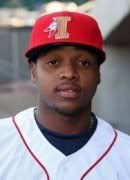 are going to hear comparisons to Jorge Posada, Victor Martinez and players like that. He was converted to catcher two years ago and we feel he really has a chance to stay behind the plate. With a plus arm and very good hands, he really has a chance to stay back there. With that bat, when you rank out major league catchers he ranks high. Our scouts are evaluating the tools of the player and not just how they perform in the league. At the same time we can also look at some statistical analysis that tries to factor some of that out and compare him to other players in the league he is playing in and not just players in all of minor league baseball. With Santana, it is not a question as his statistics and numbers would be top of the charts in basically anything."
are going to hear comparisons to Jorge Posada, Victor Martinez and players like that. He was converted to catcher two years ago and we feel he really has a chance to stay behind the plate. With a plus arm and very good hands, he really has a chance to stay back there. With that bat, when you rank out major league catchers he ranks high. Our scouts are evaluating the tools of the player and not just how they perform in the league. At the same time we can also look at some statistical analysis that tries to factor some of that out and compare him to other players in the league he is playing in and not just players in all of minor league baseball. With Santana, it is not a question as his statistics and numbers would be top of the charts in basically anything."
On John Meloan: "Our scouts saw his best role as a reliever. He was really dominant in Double-A and even in his first exposure to Triple-A last year. He was moved to a starting role because the Dodgers felt like they needed some depth there. He also has four pitches, an out-pitch curveball, a cutter, changeup and an above average fastball. He has the arsenal to be a starter and was a starter in college, where he was actually dominant at the University of Arizona in that role. But we feel like with the type of strikeout pitcher that he is and that he can get a little more velocity on his fastball in the bullpen that we feel like he could make an impact in that role on a major league team at some point. We have been following him since 2005 when he was first drafted, so we have seen a lot of his performances on back-to-back days and as a starter this year. I think the Dodgers were looking more for starting pitching depth for them, so I don't think [a drop in velocity using him on back-to-back days] was necessarily a factor in it. Actually his velocity started to creep up as a starter too in his second or third time through the lineup. I think it is not a concern to us. He has a little bit of a maximum effort delivery, so it is kind of better suited for the bullpen anyway and we really feel he has a chance to dominate there."
On Matt LaPorta: "It is hard to give a schedule or timetable for him. I think we'll let his progress dictate where he ends up, but we do feel like he has a chance to be a run producing bat for us. It has obviously been somewhat of a whirlwind for him with the travel schedule he has had where he went to from being one of the key pieces in the C.C. deal, to playing in the Futures Game, he had a death in the family to go travel to and attend, and then he was off to the Olympics in Beijing for a month. It has really been a whirlwind for him, so we'll just have to let him get comfortable in the organization and kind of let his own progress dictate where he goes."
Akron Falls In Finals Again
Akron's season wrapped up this past weekend when they dropped the Eastern League Championship Series to Trenton three games to one. After splitting two games at home late last week, Akron went on the road and lost Game Three and Game Four in  the best-of-five series. Akron lost to Trenton in the finals for the second straight year, and it is the third straight season Akron has lost in the championship series.
the best-of-five series. Akron lost to Trenton in the finals for the second straight year, and it is the third straight season Akron has lost in the championship series.
The series was lost in the decisive Game Three when two amazing defensive plays by Trenton centerfielder Austin Jackson completely changed the complexion of the game and series. Jackson hit a home run in the first inning to put Trenton up 1-0, but saved a run with his defense by leaping over the wall and robbing third baseman Wes Hodges of a game-tying solo home run to deep right-center in the fourth inning. He followed up the sensational over-the-wall catch with an encore performance in the fifth inning. With Akron now down 3-0, they had two on and none out and first baseman Matt Whitney sent a booming drive to left-center, but again Jackson covered an acre of ground, set his feet, and leapt over the wall to take away a three-run game tying home run. Akron eventually lost the game 4-1, and Akron never recovered and they were almost in a hangover for Game Four and could not get anything going offensively as they lose 5-1.
Some of the top performances from Akron's postseason include outfielder Matt LaPorta (.320, 3 HR, 6 RBI, 1.220 OPS), right-hander Frank Herrmann (1-1, 1.46 ERA, 2 games, 12.1 IP), right-hander Erik Stiller (0-0, 1.93 ERA, 5 games, 4.2 IP), and right-hander Neil Wagner (2-0, 1.42 ERA, 4 games, 6.1 IP). With Akron now finished with the playoffs, it closes the book on the Indians 2008 minor league season.
Options Still Full With Sipp
One of the good stories to come out of this season was the return of much heralded lefty Tony Sipp. After tearing his ulnar collateral ligament last year and undergoing Tommy John surgery in July 2007, Sipp rehabbed rigorously all offseason through the first few months of this season before he was sent on a rehab assignment to the Gulf Coast League Indians in late June. Sipp  continued his rehab in Kinston and then in late July settled in Akron on the active roster.
continued his rehab in Kinston and then in late July settled in Akron on the active roster.
Because Sipp spent less than 90 days on the active roster in an injured season, the Indians will retain the option they lost on him this year when he spent almost the whole season in the minors rehabbing. This special fourth year option given for medical reasons has been given out in the past, most recently to the Indians in 2006 when Brian Tallet, Andrew Brown and Jason Stanford all received fourth year options because of medical issues in the past.
This is some good news for the Indians, as they now will still have their full allotment of three option years for Sipp going into the offseason and into next year. As we have seen in the past with many players, options are vital and offer a lot of flexibility with the 40-man roster. In a nutshell, a player optioned to the minors is a player on the 40-man roster who is on "optional assignment" to the minors. An option is only used when the player is optioned to the minors, be it in spring training or anytime during the season. A player does not use an option when they are called up, only when they are sent down from the major league roster to the minors.
Comings And Goings
Here are some recent signings and releases I have not mentioned:
Released: Austin Creps (RHP), Corteze Armstrong (OF)
Signed: Joel Torres (OF)
Photos courtesy of Akron Aeros, Kinston Indians, Columbus Clippers, Associated Press, and City of Goodyear.



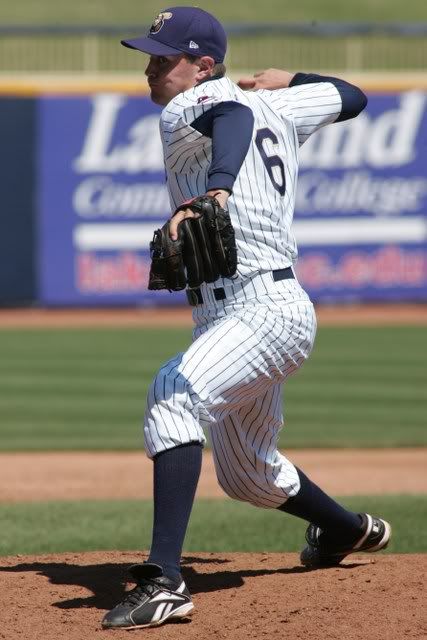

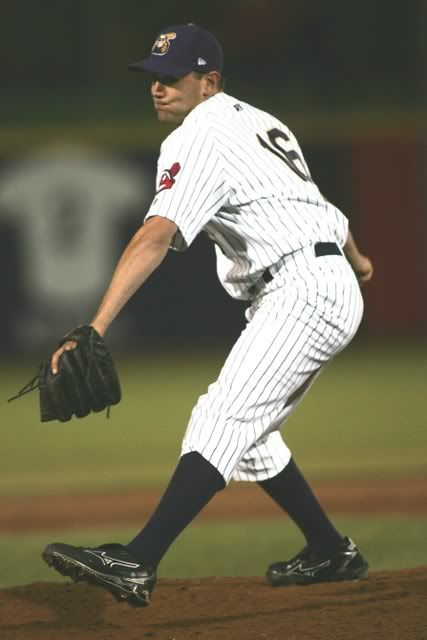 just being able to go out and attack hitters and identify what their weaknesses are and attack and put them away when they are setup. It is mostly just going out there and sticking to your gameplan."
just being able to go out and attack hitters and identify what their weaknesses are and attack and put them away when they are setup. It is mostly just going out there and sticking to your gameplan."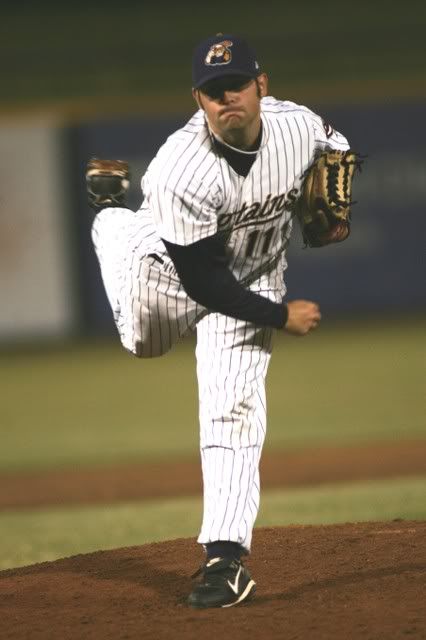


 weakest position in the system.
weakest position in the system.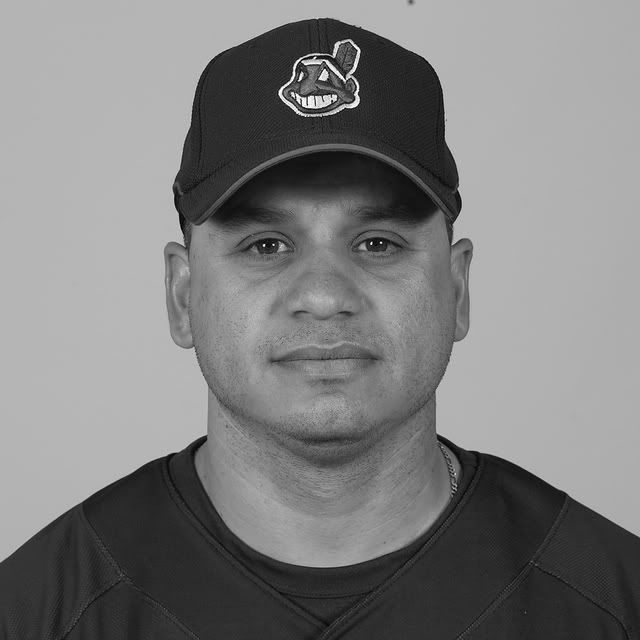 hung up the cleats that if he needed a job to give him a call. This past season was only his second year in the organization as a coach, and this year was his first as the hitting coach as last season he came in as just an extra coach in Mahoning Valley to sort of learn the ropes.
hung up the cleats that if he needed a job to give him a call. This past season was only his second year in the organization as a coach, and this year was his first as the hitting coach as last season he came in as just an extra coach in Mahoning Valley to sort of learn the ropes.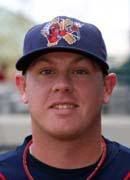 commonly goes by his middle name of Heath. Once I connected the dots and realized that Brandon Taylor was in fact Heath Taylor and not some recently sign undrafted free agent I quickly realized that Taylor was on his rehab assignment after being MIA for almost three months with an elbow injury.
commonly goes by his middle name of Heath. Once I connected the dots and realized that Brandon Taylor was in fact Heath Taylor and not some recently sign undrafted free agent I quickly realized that Taylor was on his rehab assignment after being MIA for almost three months with an elbow injury.
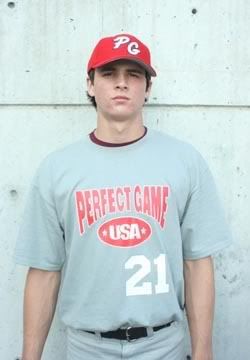 13 games (50 IP, 23 H, 34 BB, 98 K), and had signed a letter of intent to pitch for Rice University before signing with the Indians.
13 games (50 IP, 23 H, 34 BB, 98 K), and had signed a letter of intent to pitch for Rice University before signing with the Indians.
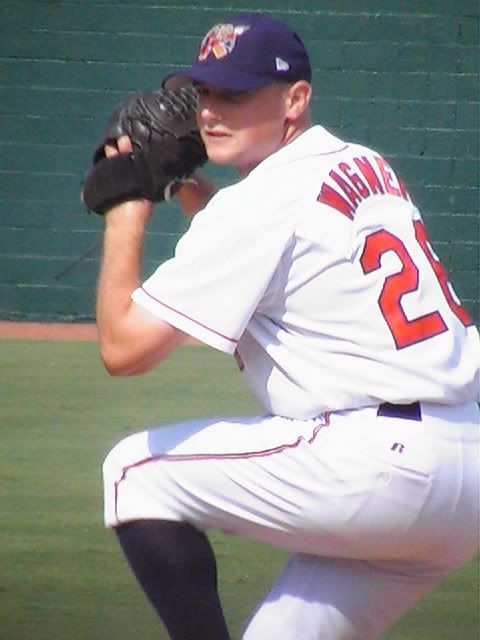

 Indians General Manager Mark Shapiro a phone message that the Clippers were very interested in partnering up with the Indians and that they would like to set up a meeting to discuss it. Schnacke drove up to Progressive Field and talked with the Indians, and within about twelve hours after that phone call a marriage between Cleveland and Columbus was consummated.
Indians General Manager Mark Shapiro a phone message that the Clippers were very interested in partnering up with the Indians and that they would like to set up a meeting to discuss it. Schnacke drove up to Progressive Field and talked with the Indians, and within about twelve hours after that phone call a marriage between Cleveland and Columbus was consummated. Matt LaPorta:
Matt LaPorta: Goodyear, Arizona. The player development part of the complex is complete and will be utilized for the next month in the FIL until it concludes on October 17th. The start of the FIL marks the organization's first official activities in the Goodyear complex as they get set for their first spring training there this coming February after 16 years in Winter Haven, Florida.
Goodyear, Arizona. The player development part of the complex is complete and will be utilized for the next month in the FIL until it concludes on October 17th. The start of the FIL marks the organization's first official activities in the Goodyear complex as they get set for their first spring training there this coming February after 16 years in Winter Haven, Florida. for minor league non-40 man prospects. It is a great developmental league for all of our guys. I am excited about Wes Hodges and Beau Mills, Sipp and some other pitchers that are going. It is a great experience. You are facing the best guys around all of minor league baseball and a very competitive schedule. You play six days a week, most of the games are during the day when it is hot and humid, and there is some fatigue and tired issues they have to fight through. For everybody we have sent out there over the years it has really been a plus for them developmentally."
for minor league non-40 man prospects. It is a great developmental league for all of our guys. I am excited about Wes Hodges and Beau Mills, Sipp and some other pitchers that are going. It is a great experience. You are facing the best guys around all of minor league baseball and a very competitive schedule. You play six days a week, most of the games are during the day when it is hot and humid, and there is some fatigue and tired issues they have to fight through. For everybody we have sent out there over the years it has really been a plus for them developmentally." international free agent from the island nation of Taiwan and signed a minor league contract for a reported $400,000.
international free agent from the island nation of Taiwan and signed a minor league contract for a reported $400,000. are going to hear comparisons to Jorge Posada, Victor Martinez and players like that. He was converted to catcher two years ago and we feel he really has a chance to stay behind the plate. With a plus arm and very good hands, he really has a chance to stay back there. With that bat, when you rank out major league catchers he ranks high. Our scouts are evaluating the tools of the player and not just how they perform in the league. At the same time we can also look at some statistical analysis that tries to factor some of that out and compare him to other players in the league he is playing in and not just players in all of minor league baseball. With Santana, it is not a question as his statistics and numbers would be top of the charts in basically anything."
are going to hear comparisons to Jorge Posada, Victor Martinez and players like that. He was converted to catcher two years ago and we feel he really has a chance to stay behind the plate. With a plus arm and very good hands, he really has a chance to stay back there. With that bat, when you rank out major league catchers he ranks high. Our scouts are evaluating the tools of the player and not just how they perform in the league. At the same time we can also look at some statistical analysis that tries to factor some of that out and compare him to other players in the league he is playing in and not just players in all of minor league baseball. With Santana, it is not a question as his statistics and numbers would be top of the charts in basically anything." the best-of-five series. Akron lost to Trenton in the finals for the second straight year, and it is the third straight season Akron has lost in the championship series.
the best-of-five series. Akron lost to Trenton in the finals for the second straight year, and it is the third straight season Akron has lost in the championship series. continued his rehab in Kinston and then in late July settled in Akron on the active roster.
continued his rehab in Kinston and then in late July settled in Akron on the active roster.
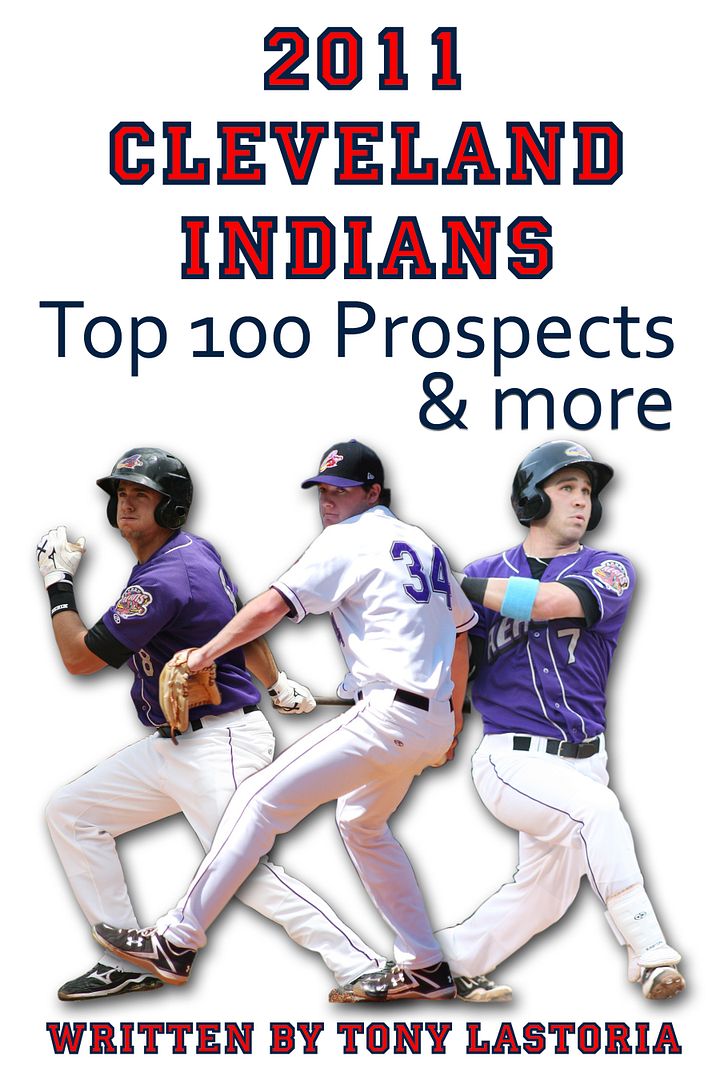
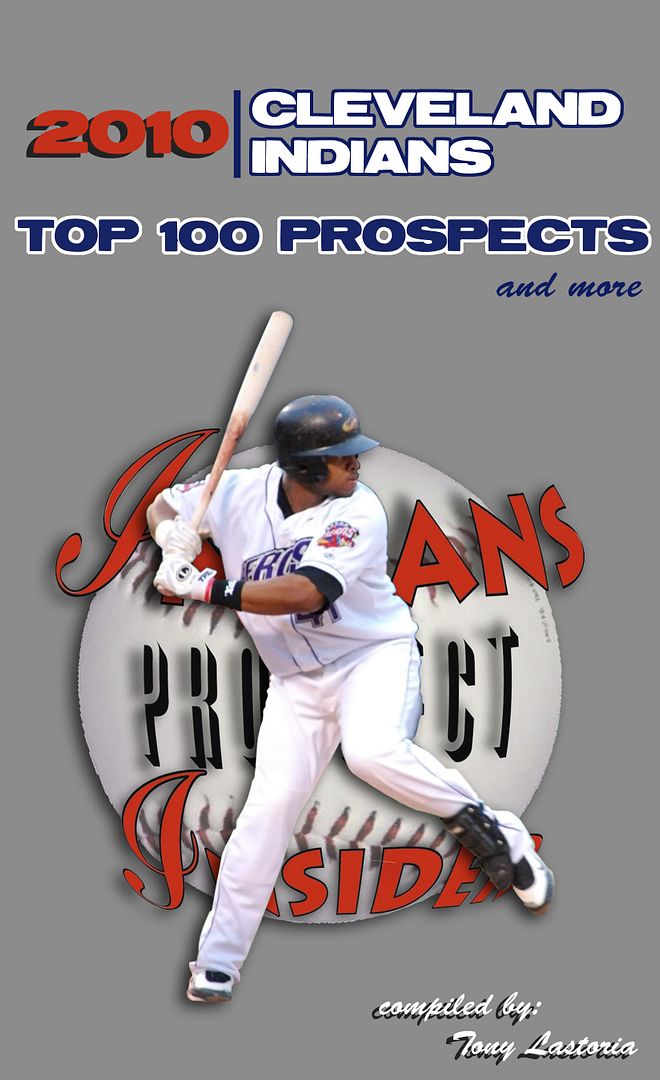
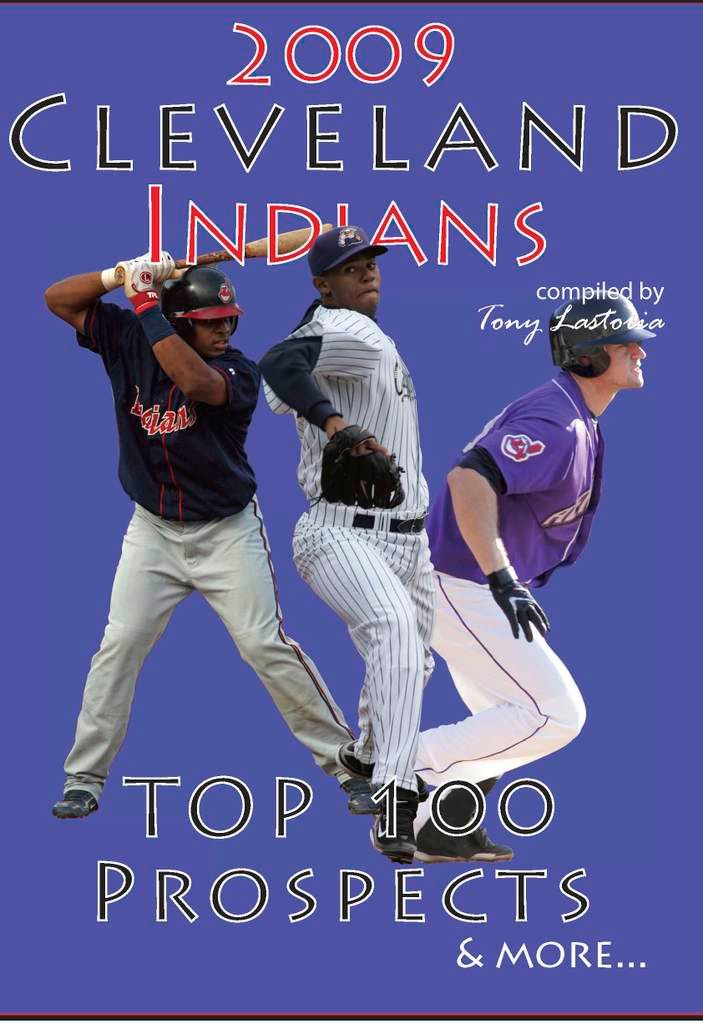
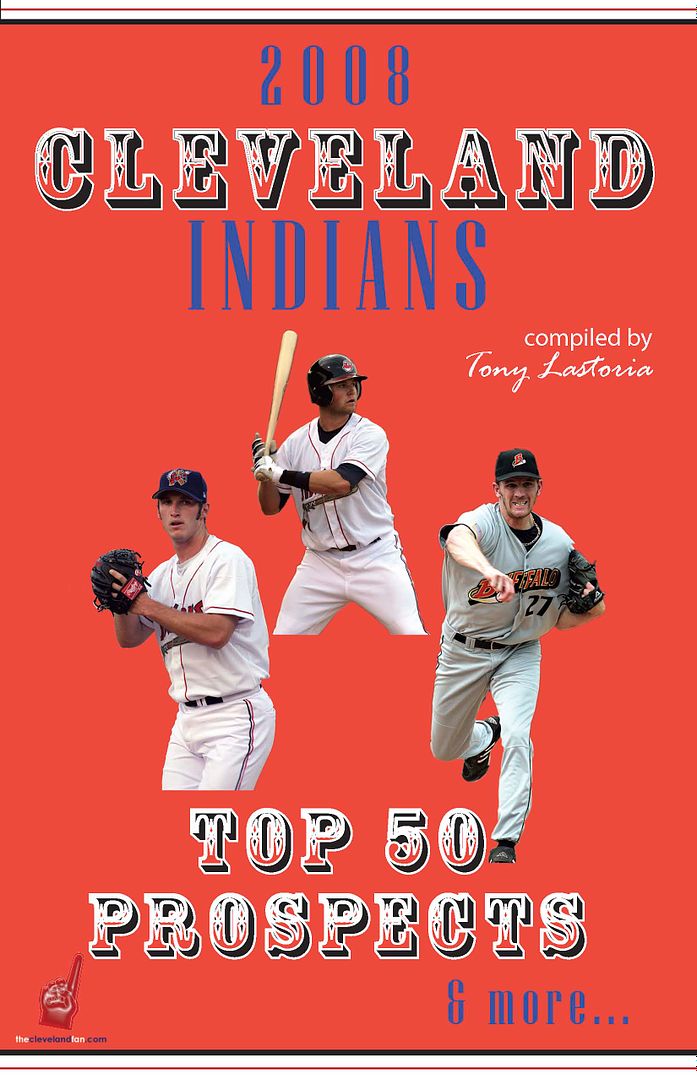
 Everything on this site is free, but for those interested in making any monetary contributions to help support the stability and growth of this site please click on the "Donate" button below.
Everything on this site is free, but for those interested in making any monetary contributions to help support the stability and growth of this site please click on the "Donate" button below.

